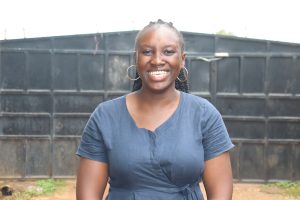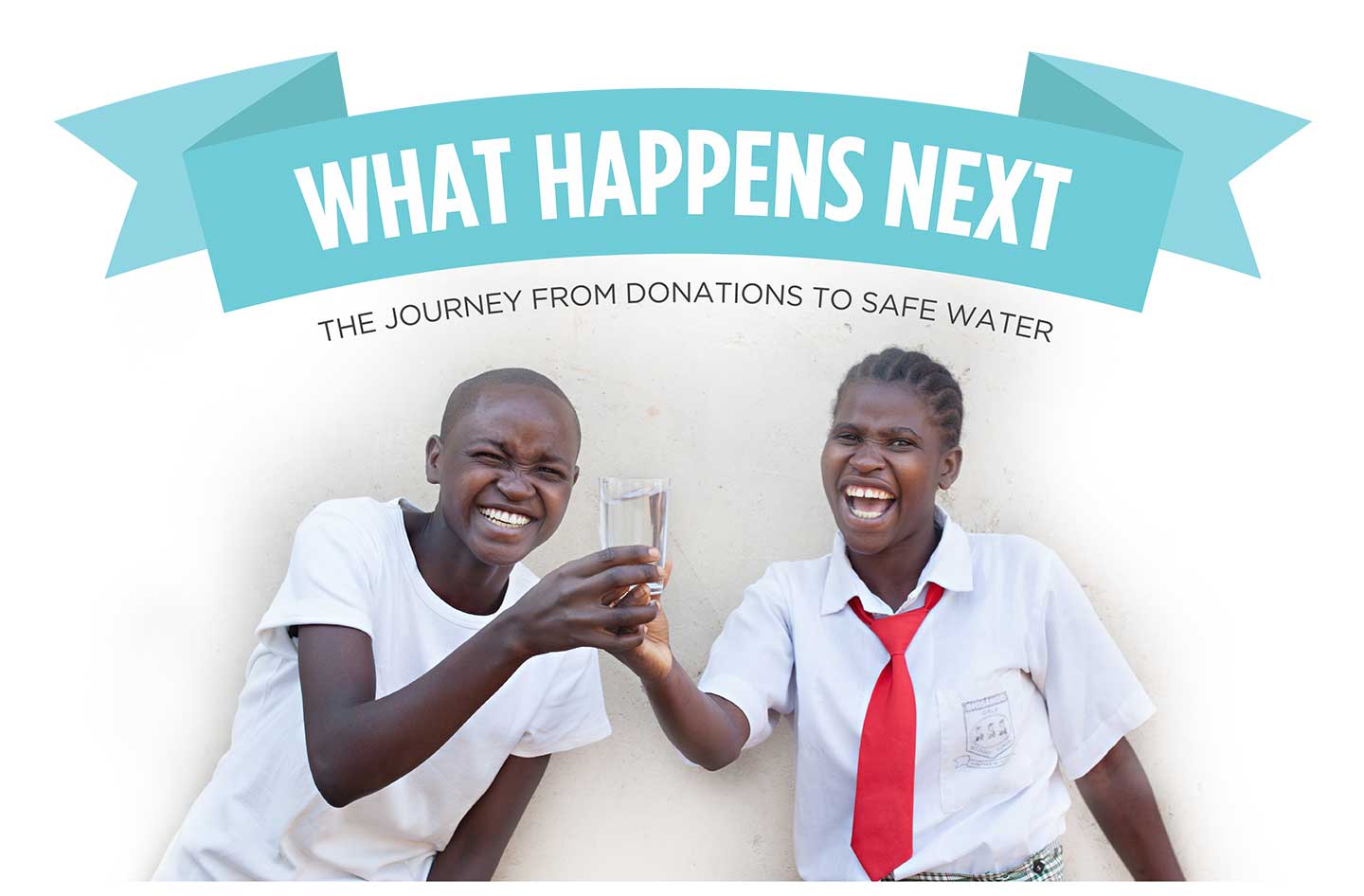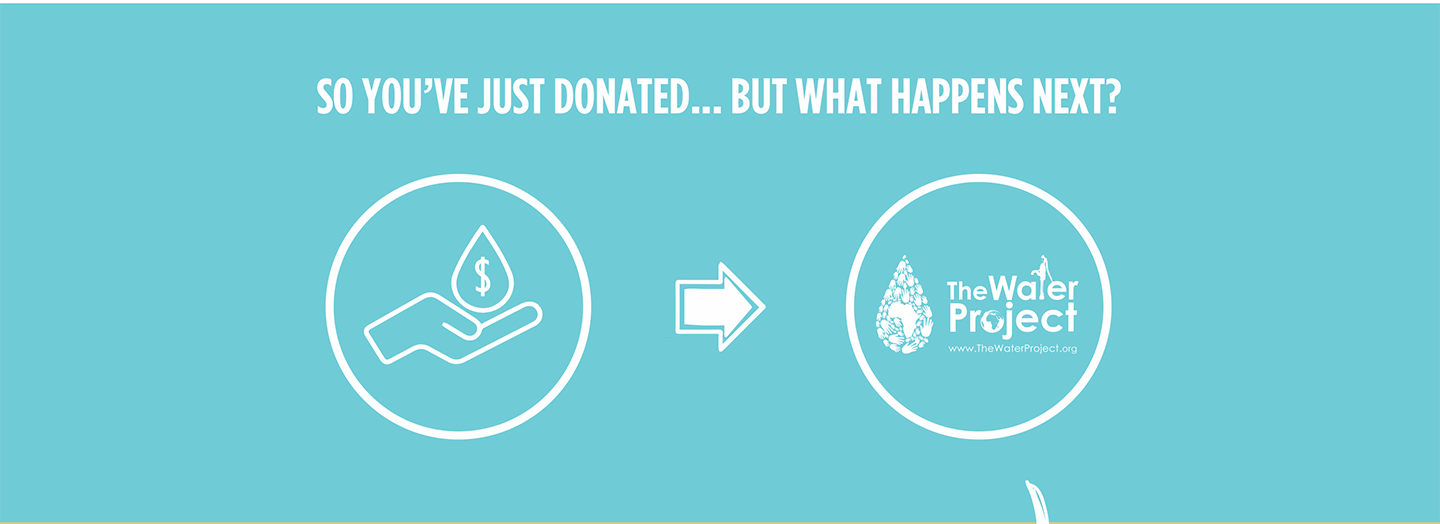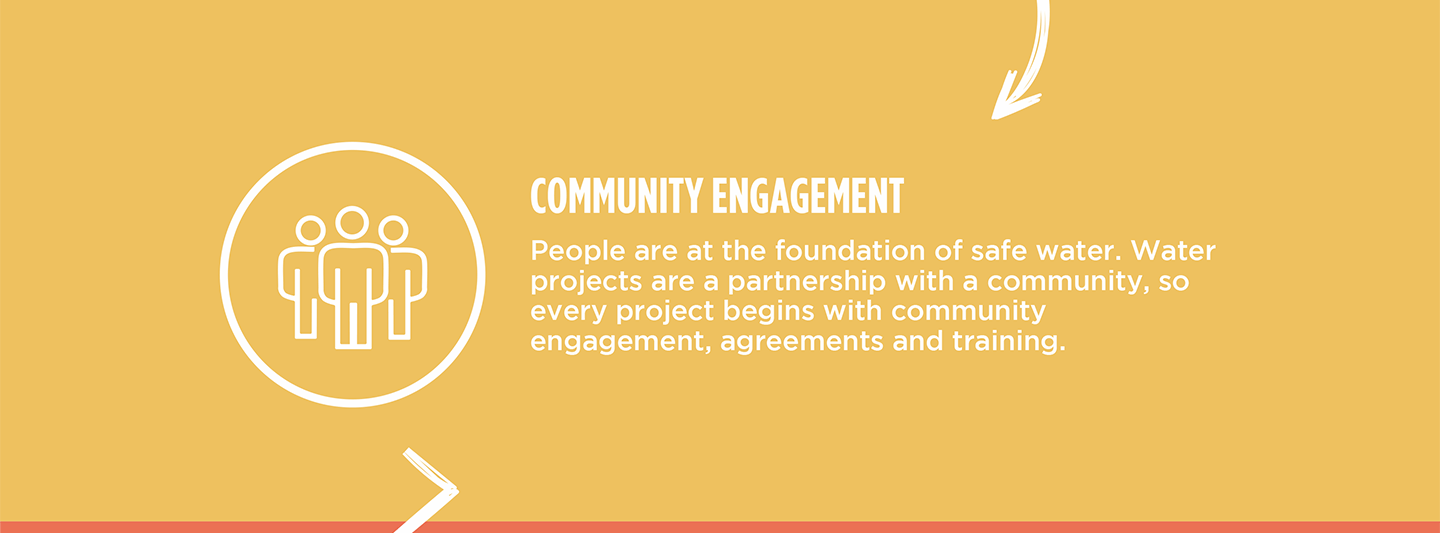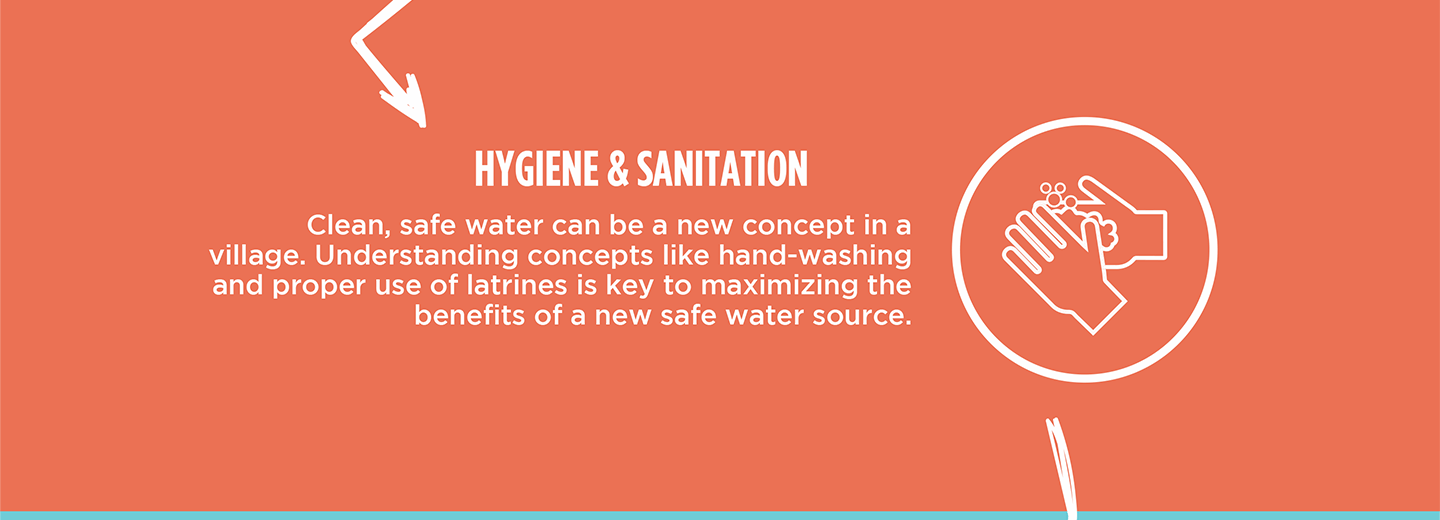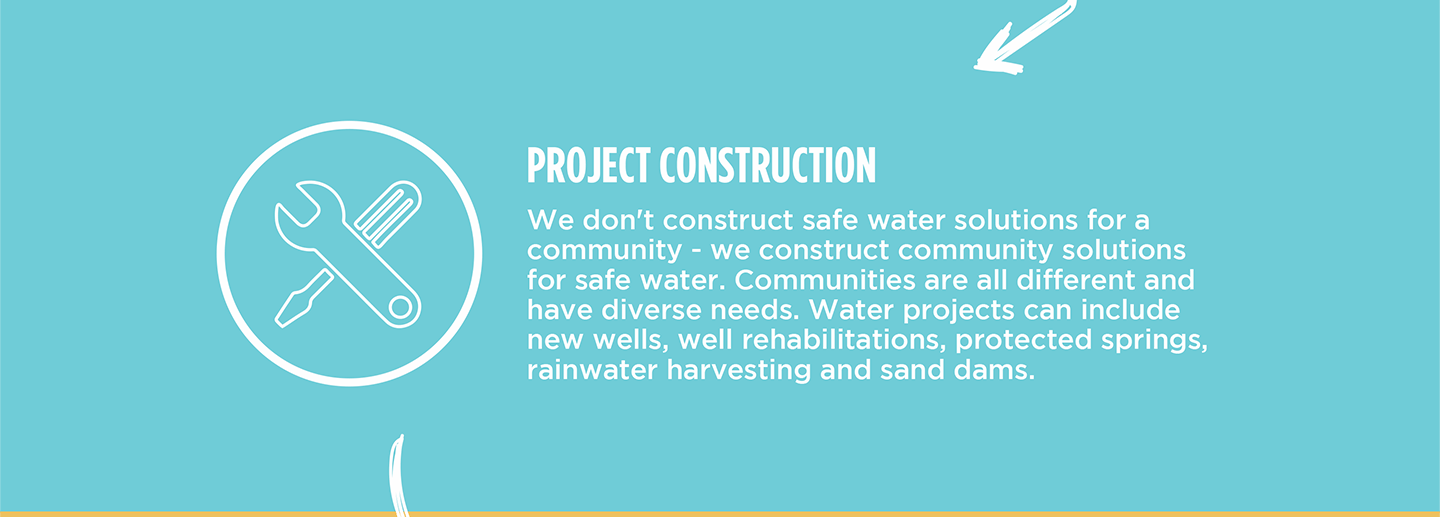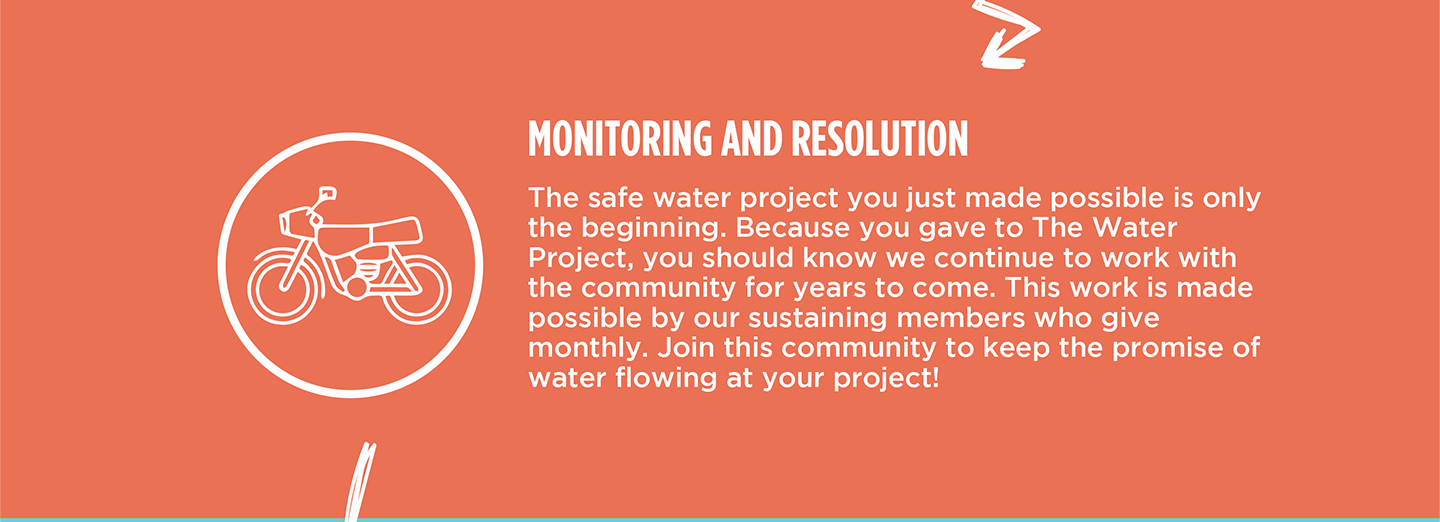At Kakamega Polytechnic, 749 students and 22 staff members struggle daily without reliable water. The school’s rain tanks only help during the rainy season, while piped water is prohibitively expensive. Past debts forced the school to cut enrollment, yet even now, students must ration what little water is available—often wasting precious hours standing in line. Hours that should be spent in the classroom, building their futures.
Valerian, a 16-year-old student, dreams of becoming a head chef. But without consistent access to water, her education and future are at risk.

Valerian.
"First of all, the water we have in school all around is tapped. So for us students, teachers [have] to access the water through the taps. And it is quite a process for us, being called before the water is around. Secondly, if the water is being pumped or from a truck vendor, we have to wait for it to be filled at one point so as to access it; [only] after it is paid for, or else we don't get it. But the rainwater, we thank God it is freely available, just when it is [the] rainy season that we get to use it, but most of the time, it is the [only] source we have around the school; the school rations it and controls how it should be used, and that is frustrating," Valerian shared.
The school’s rationing ensures survival but forces painful sacrifices. Students fall behind, teachers struggle to meet curriculum demands, and futures slip further out of reach.

Students washing dishes.
"I would be focusing on my studies and improving my career development, which is at hand right now, because when I grow up, I want to be a head chef. Currently, I'm in food design, and you get times [where] the water is not enough for us to use. We have to use it to cook, and after which we wash our utensils, so we have to wait for the water to be bought for us to do our practicals, and this gets us to finish our work very late," Valerian lamented.
So much crucial learning time is lost daily. She continued, "We spend a lot of time waiting for the water to be available in school, and again wait for our turn to fetch the water, which consumes a lot of time that is to be used to study and be in class."
The Kakamega Polytechnic's water crisis will continue to wear down its students and their futures until it's solved. Valerian's time is running out for a chance to get an education unhindered.
"Sometimes I'm not excited because you get to waste a lot of time that should be used studying, catching up with what the teacher taught previously, to fetch water to use it for a single practical, and thereby being slow to catch up makes me feel overwhelmed sometimes," Valerian shared bravely.

Valerian poses with her class.
Installing a borehole well on the school's campus will ensure they have flowing water, all year round, without having to pay for it. This will allow Valerian and her classmates to chase their dreams.
Steps Toward a Solution
Schools without reliable, on-premises water access often rely on students to fetch and carry water, leading to rationing and uncertainty about water quality. The water is typically poured into a communal storage tank and used by the entire school. With children carrying water from all different sources, it is also impossible for teachers and staff to know exactly where the water comes from and how safe it is to drink.
A new water point will be located on-premises at the school to ensure accessibility, reliability, and safety for students, teachers, and staff while meeting our school coverage goals. Having water available at the school allows children to drink, wash hands, and use sanitation facilities without leaving school grounds, preventing disruptions to lessons and reducing safety risks. A dedicated source increases water availability, reduces reliance on stored water, minimizes rationing, and ensures confidence in the safety of the water. This means staff and students are healthier, and their lessons aren’t disrupted, contributing to a better education!
Our technical experts worked with the school leadership and local community to identify the most effective solution to their water crisis. They decided to drill a borehole well, construct a platform for the well, and attach a hand pump.
Well
Abundant water often lies just beneath our feet. Aquifers—natural underground rivers—flow through layers of sediment and rock, offering a constant supply of safe water. A borehole well is drilled deep into the earth to access this naturally filtered and protected water. We penetrate meters, sometimes even hundreds of meters, of soil, silt, rock, and more to reach the water underground. Once found, we construct a platform for the well and attach a hand pump. The community gains a safe, enclosed water source capable of providing approximately five gallons of water per minute.
Our proposed water point can only serve 300 people per day. We hope to continue working with this community to identify other water solutions that will ensure all the people in this community have access to safe and reliable drinking water.
Handwashing Stations
Alongside each water source, we install two gravity-fed handwashing stations, enabling everyone at the school to wash their hands. Handwashing is crucial for preventing water-related illnesses within the school and community. Student “health clubs” maintain the stations, fill them with water, and supply them with soap, which we often teach them how to make.
Latrines
We will construct two Ventilated Improved Pit (VIP) latrine blocks designed to prevent fecal disease transmission. Each latrine features a cement floor, making it easy to use and clean regularly. Three stalls will serve the girls, and three will serve the boys.
School Education & Ownership
Hygiene and sanitation training are integral to our water projects. Training is tailored to each school's specific needs and includes key topics such as proper water handling, improved hygiene practices, disease transmission prevention, and care of the new water point.
To ensure a lasting impact, we support forming a student health club composed of elected student representatives and a teacher. These clubs promote hygiene practices schoolwide and keep handwashing stations well-stocked. This student-led model encourages a sense of ownership and responsibility.
Safe water and improved hygiene habits foster a healthier future for everyone in the school and the surrounding community.

 Borehole Well and Hand Pump
Borehole Well and Hand Pump
 Rehabilitation Project
Rehabilitation Project












